The fully electric Corsa is an important car not only for Opel but an important car for electric car ranges. As we know the original Corsa has been around for a few generations, this new fully electric Corsa is completely separate from its GM predecessor. It’s Opel’s intention that the impact of the electric Corsa on the market could be extremely significant for them.
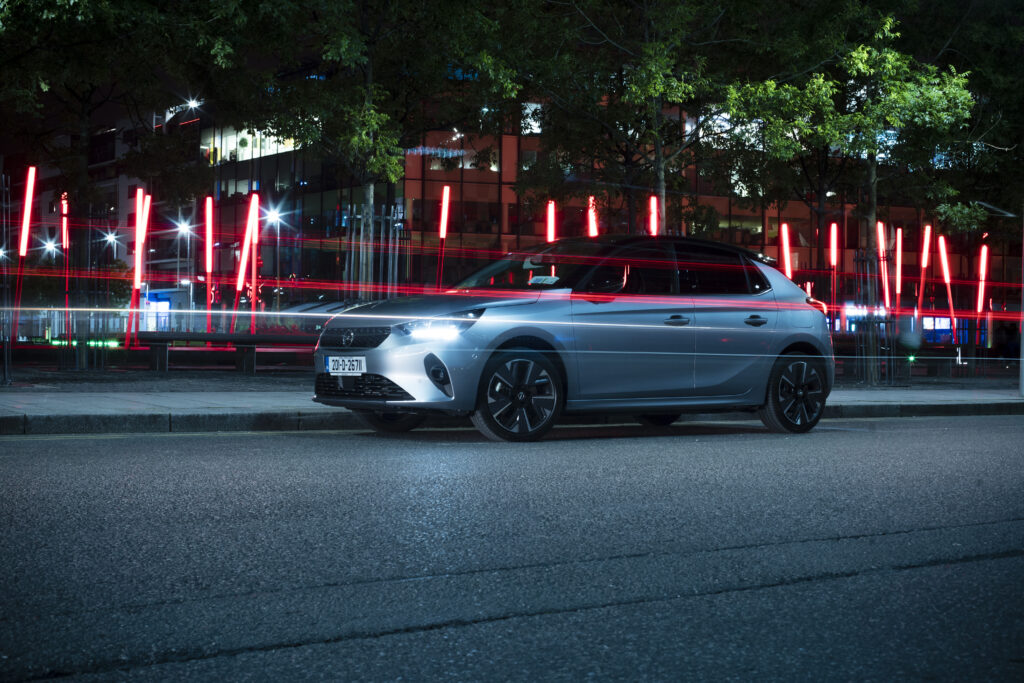
Special mention : Driveability (it’s fun). Controls are mostly physical with only some available via touch screen (a good thing). Regenerative braking doesn’t impede the driving style. Lane assist can be turned off easily and stays off.
Needs work : Digital displays are simplistic. You need to use minimum of 7 kw/h charger and above otherwise it just takes too long to charge (no granny cable supplied). 337 km WLTP range is possible using 100 kw DC fast charger, but that’s not available everywhere just yet. No spare tyre.
Specs: As tested
| Max Power 136 BHP | Electric / Auto |
| 0-100 km/h in 8.1 seconds | Road Tax €120 |
| €27,338.00 (inclusive of VRT rebate and SEAI grant) | Boot 309 litres |
It’s no bad thing that the Corsa is very similar to the Peugeot 208, the basic mechanics are shared, with both using a 50 kw/h lithium ion battery which has 136bhp. Opel quotes a 0-50km/h of 2.8 seconds which is pretty brisk, and an overall 0-100km/h of 8.1seconds.
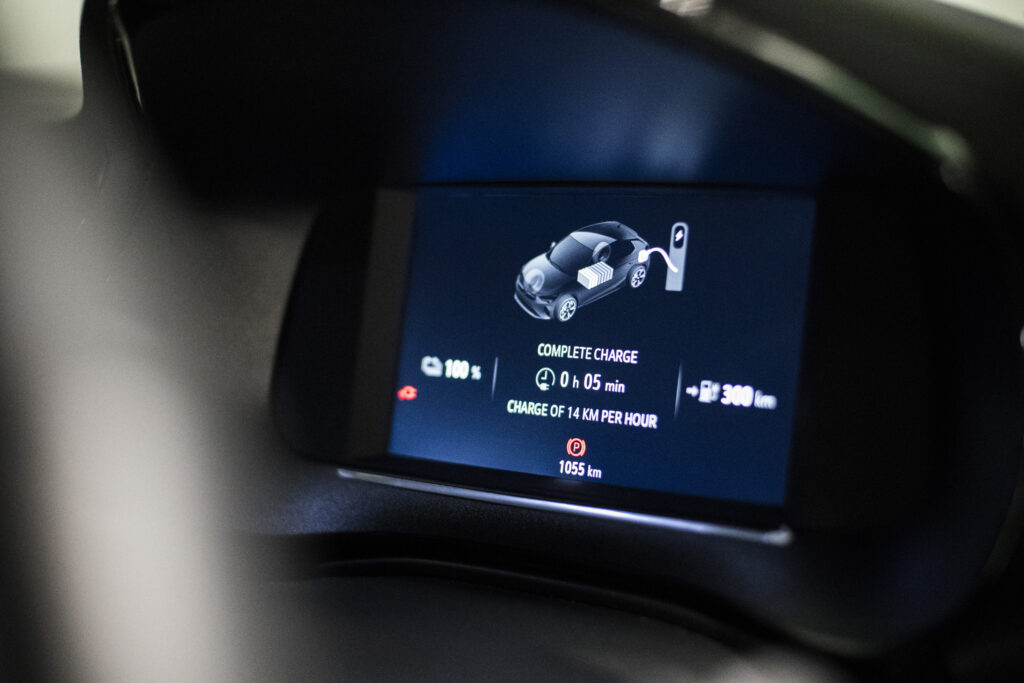
Just like every other electric car, it gets that initial hit of acceleration from the off, especially when you have it in sport mode. If you care more about prolonging the battery range then you can put it into normal mode which reduces the power a bit and then again into eco mode which increases the battery range further but impacts the driving fun. Opel claim WLTP range for the Corsa-e is the same as the Peugeot 208 which is more than 300KMs. With this new breed of electric cars launching, it puts the Corsa roughly in the middle of the electric car selection. You’ve got a smaller city car that doesn’t go as far and now with others like the Kia Nero and the Hyundai Kona electric, both of which go significantly further, and the new Renault Zoe stretches its range further again.
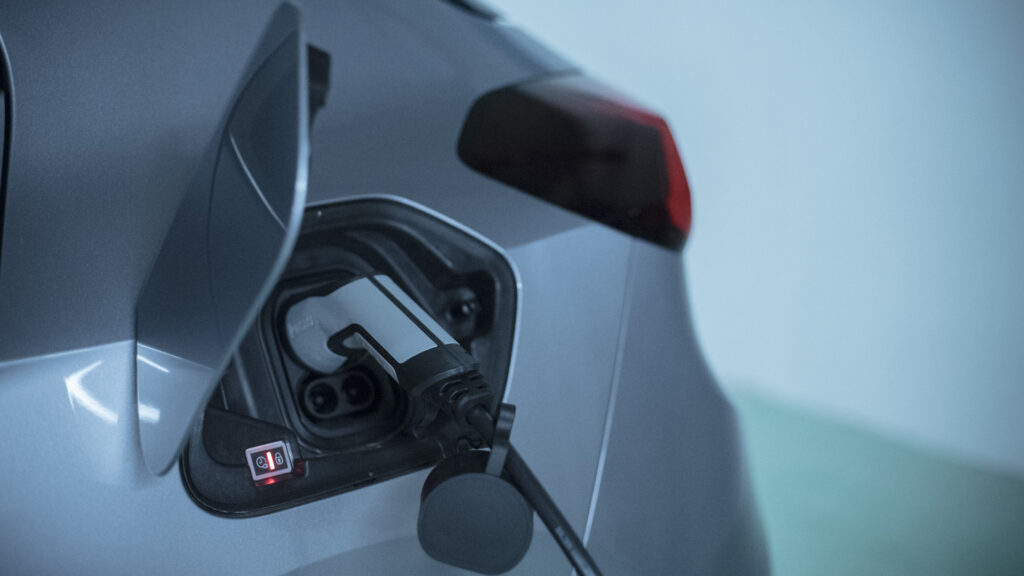
In slow-moving motorway crawls, what strikes you about the Corsa-e is that it’s very quiet, when it’s at really low speeds it has that eerie electrical hum to let people know that there’s an electric car approaching. At quicker speeds it’s very impressive with a compliant ride. The Corsa-e does have a different suspension setup to the standard Corsa and the steering’s different partly due to the 50 KW/h lithium ion battery which weighs 355 kilograms. It’s quite a considerable amount of extra weight to put on a car, so to counteract that they have changed the suspension, it does feel slightly firmer which is nice and it’s quite controlled compared to the standard Corsa.
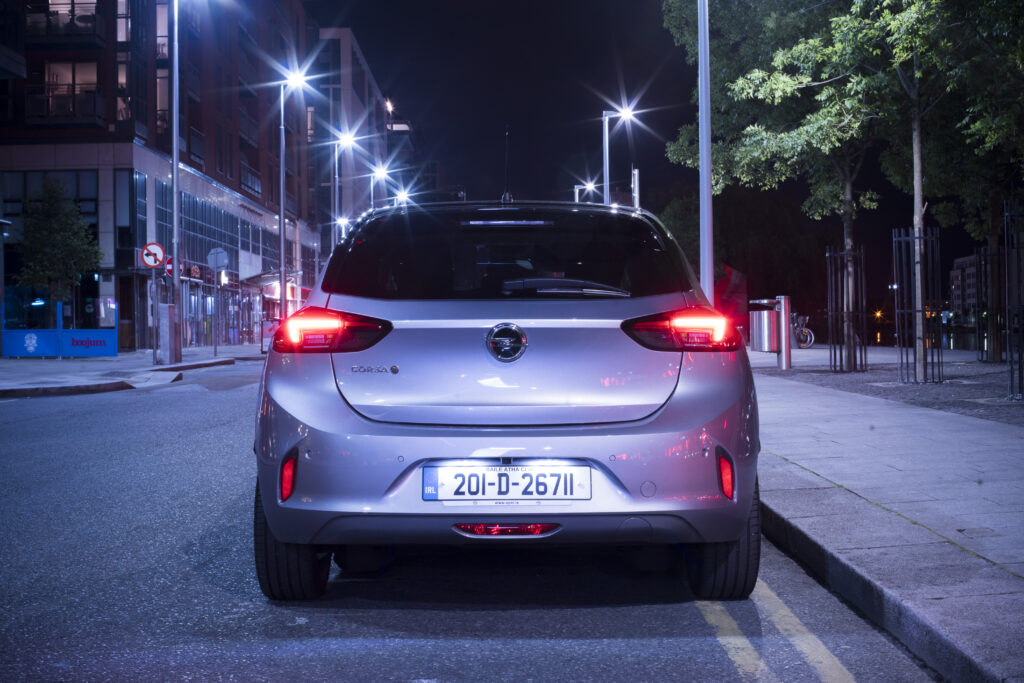
There are other subtle differences between the Corsa-e and the Petrol and Diesel versions where the track at the front and the rear is wider, the wheels are further apart and similarly the wheelbase between the front and rear is seven millimetres longer but you won’t notice that on the interior. The space goes to the rear axle which has been moved further back to cope with the new battery pack.
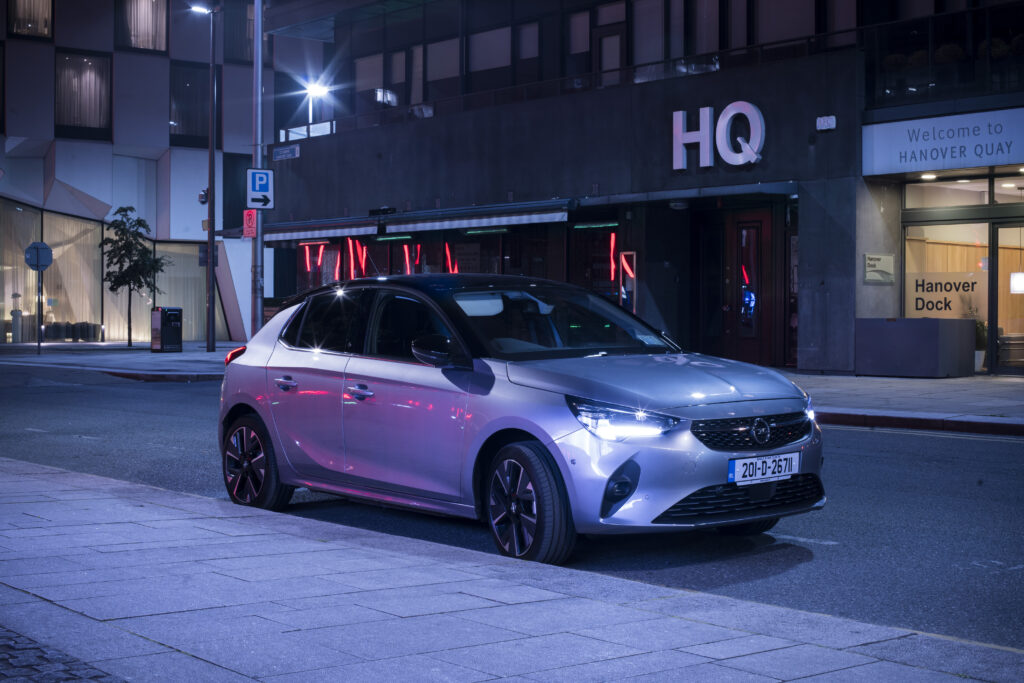
The heavy battery pack is laid out in an H pattern in the Corsa- e, it gets distributed under the front seats, some more distributed under the rear seats and there’s a section in the centre that connects them. There’s no compromise on interior space between ICE versions and electric versions, although if you go for the electric version you can’t option a spare wheel and there isn’t any under floor storage space. If you want to charge the lithium-ion battery from a three-pin plug it’s going to take more than a day so Opel doesn’t actually include that cable as standard. For that you need to buy an accessory with a few different cable ends to it.
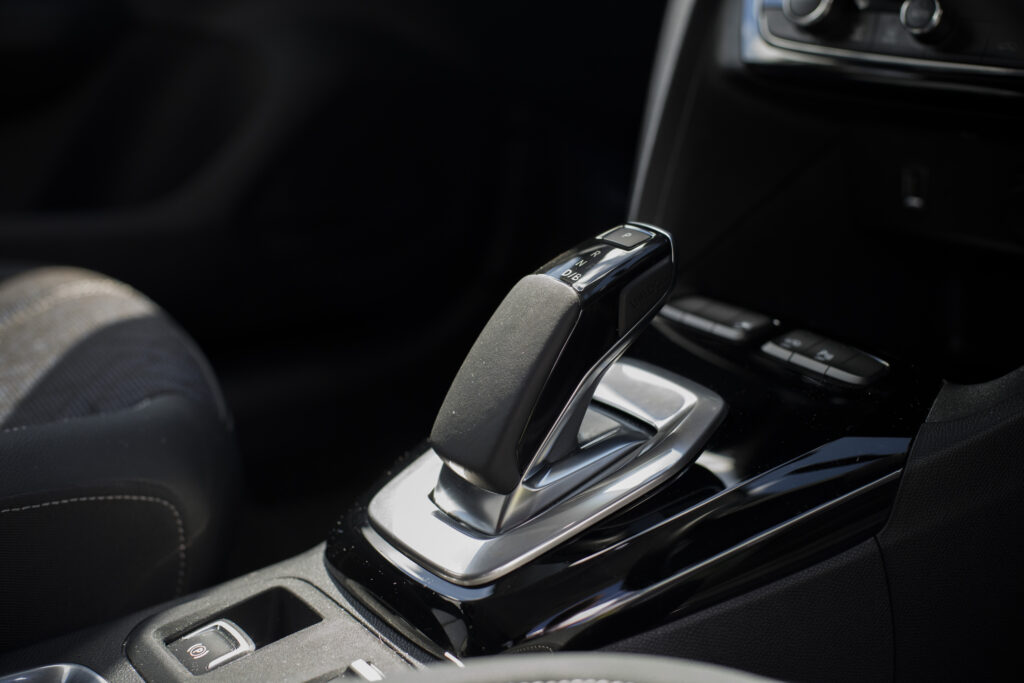
With the provided charging cable for 7KW/h chargers and up, a full charge takes more than 8 hours which is comparable with the Peugeot 208 and similar electric cars. With the Corsa-e it accepts charging up to speeds of 100 kilowatts which is very good although obviously there aren’t that many charging stations in Ireland that offers such a quick charge. The electric acceleration is much more impressive when you’re going at lower speeds than it is on the motorway. It keeps up on the motorway fine but obviously you get more of a hit at lower speeds. It’s really quick around town and is certainly a lot quicker than the Mini electric. The steering has been adjusted from the standard Corsa and feels good, it’s as precise and accurate as you need it to be.
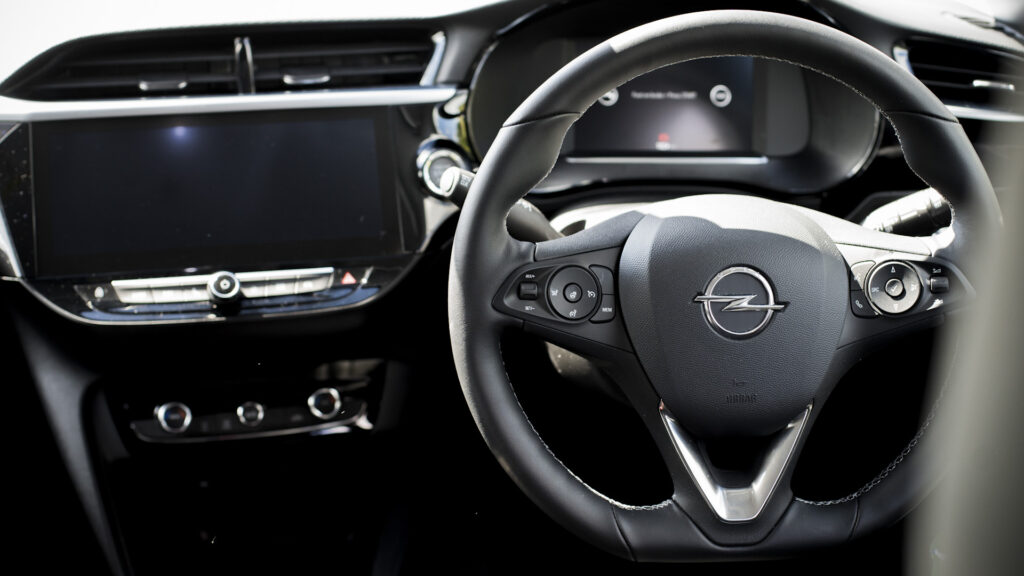
The steering wheel is slightly larger compared to the Peugeot 208’s and it doesn’t have a great deal of feeling but it also doesn’t feel light. The ride around town is firmer and more Germanic than its French counterpart, it’s certainly not uncomfortable though.
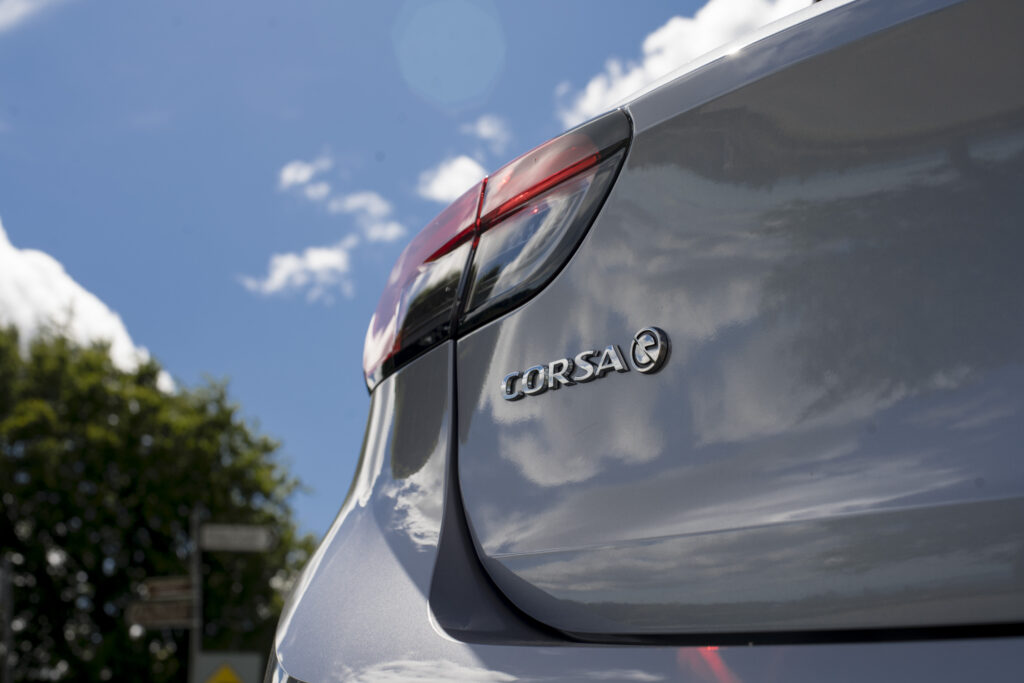
The best thing about the Corsa-e interior is that you still have physical dials for the air-conditioning & Sat-Nav where many new cars have them hidden within menus in the infotainment system. The material quality is quite decent with some gloss trim for that added piano black effect. The driver display looks as though it’s a little small for the space but the screen itself displays the information clearly. The graphics look a little dated and the infotainment system has access to more modern features available via Apple CarPlay or Android auto.
Compared to the Mini electric, the Corsa-e is significantly better value and it’s got better range.
